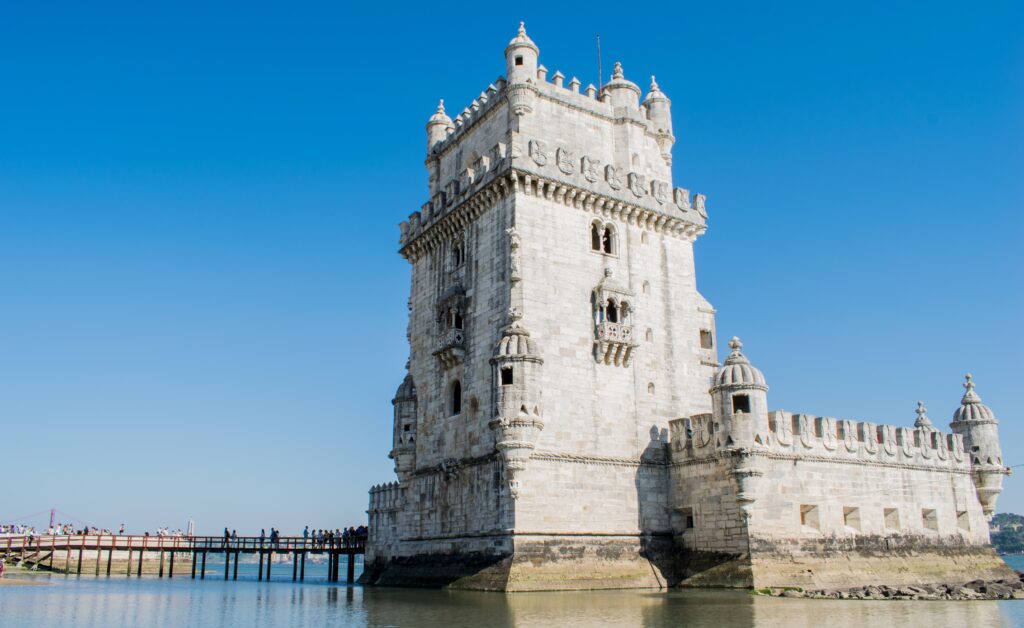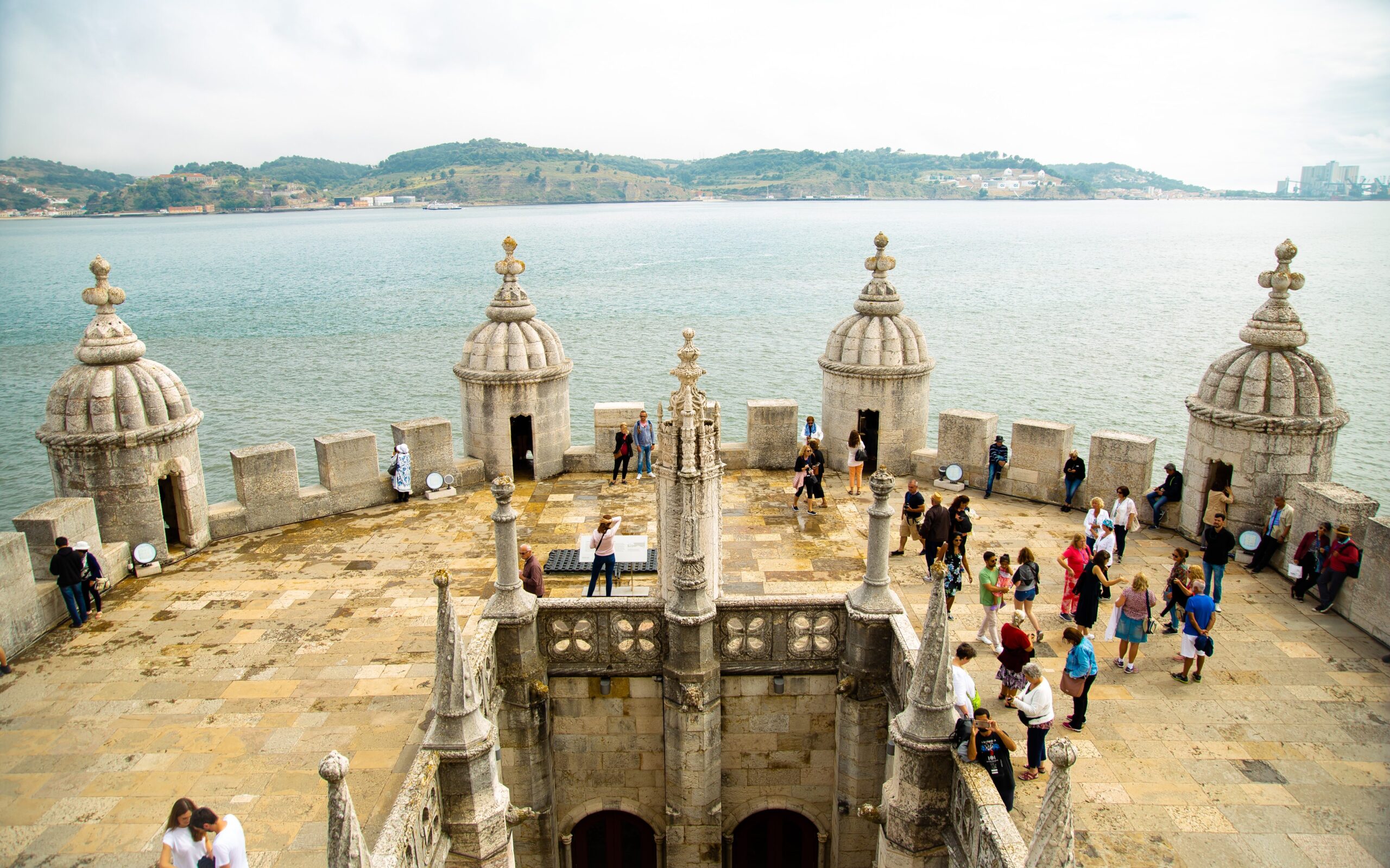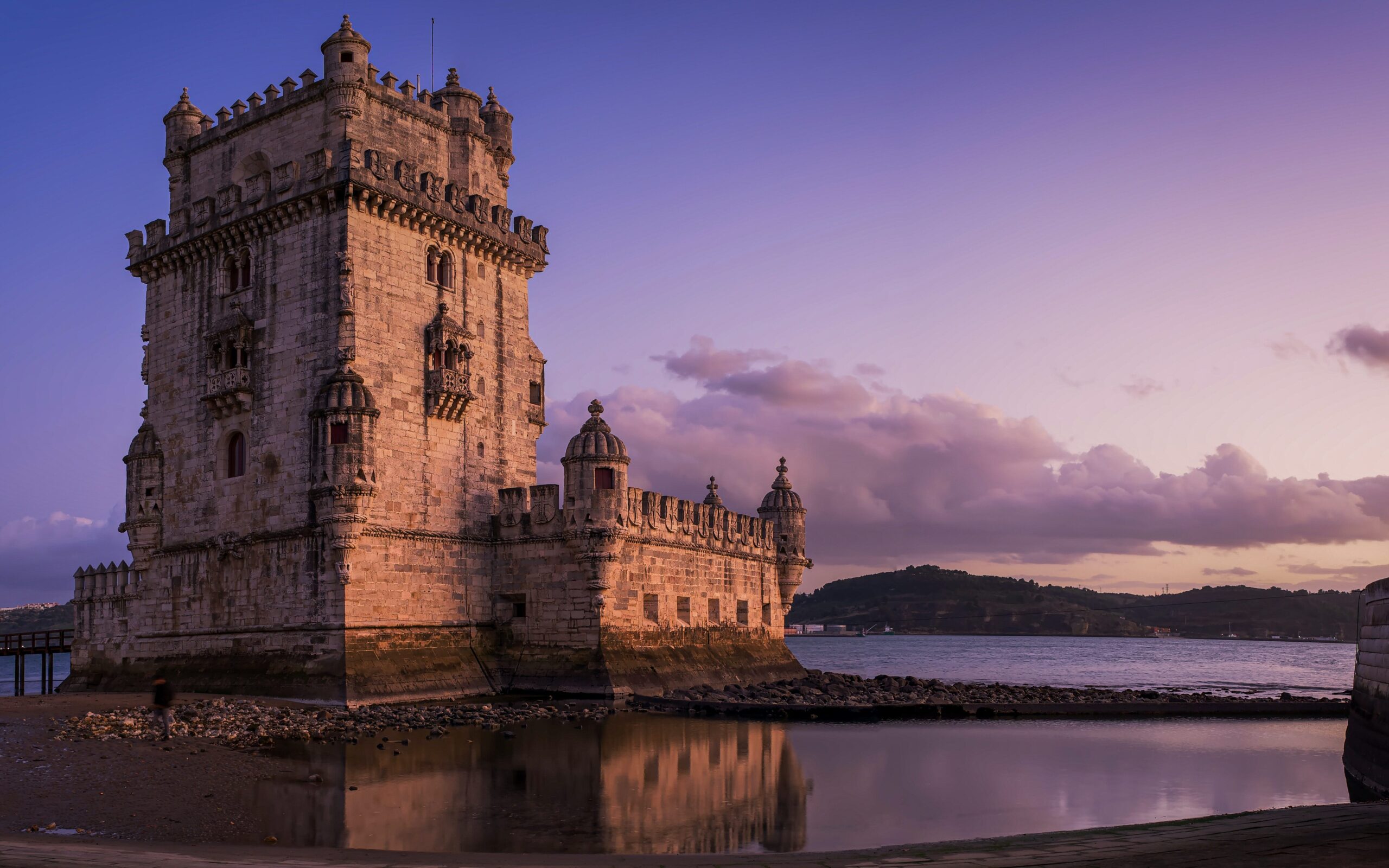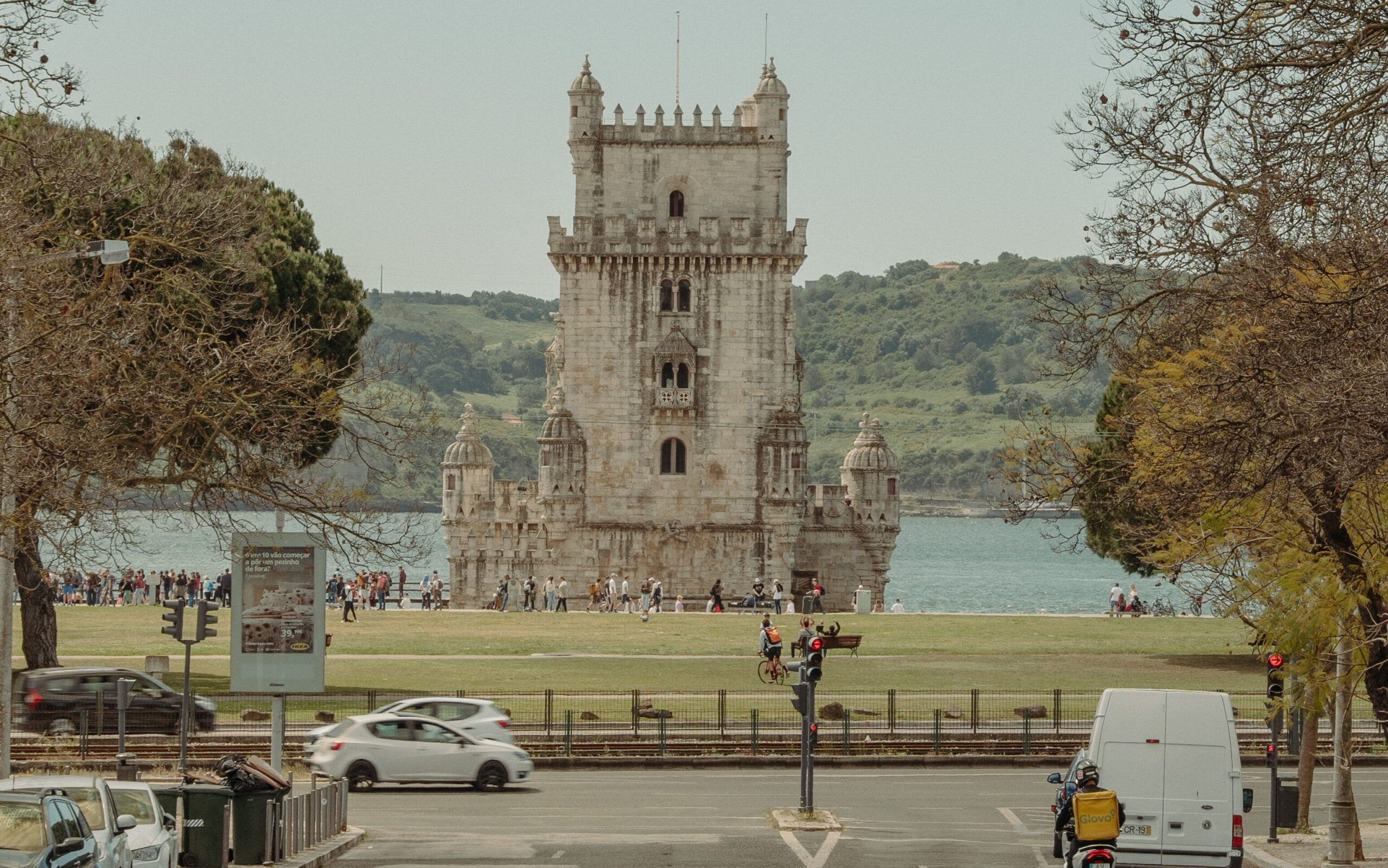Itinerary
Top Attractions
- Sao Jorge Castle
- Jeronimos Monastery
- Belém Tower
- Lisbon Oceanarium
- Sintra Day Trip
- National Palace Ajuda
- Lisbon Zoo
- Queluz National Palace
- Lisbon Cathedral
- Pasteis de Belém
- National Pantheon
- Pilar 7 Bridge Experience
- Benfica Stadium Tour
- Arco da Rua Augusta
- Santa Justa Lift
- Pink Street
- LX Factory
- Carmo Convent
About
Disclaimer
Posts on visit-lisbon.net may contain affiliate links, meaning we get a small commission if you decide to make a purchase through our links, at no cost to you. Any income earned helps maintain this website and keeps it ad-free.
Belem Tower Lisbon – Tickets and Visitor Guide
How to Visit Belém Tower Lisbon – Location, Tickets & Tips


Belém Tower in Lisbon is a medieval fortress built on the banks of the Tagus River. Initially built to defend the city, the tower is a key symbol of Portugal’s age of discovery.
Today, visiting Belém Tower is one of the top things to do in Lisbon. As a UNESCO World Heritage Site, it attracts travelers from around the world and remains one of the city’s most iconic tourist attractions.
Belém Tower – General Information |
|
Location |
Belém, west of Lisbon city centre, easily accessible by tram, train, or bus. |
Opening Times |
Belém Tower is temporarily closed to the public for renovation work for the remainder of 2025. |
Tickets |
As the tower is closed in 2025, ticket sales are paused. |
Visiting Belem Tower Lisbon
A visit to Belém Tower in Lisbon typically takes between 40 minutes to 1 hour, depending on crowds and your pace. While the tower includes information panels in several languages, many visitors find it helpful to download an audio guide to their phone for a deeper understanding of the tower’s history and architecture.
Inside the tower, eating, drinking and smoking are not allowed, and bags may be checked at the entrance.
There are toilets available inside Belém Tower, including a wheelchair-accessible restroom on the ground floor.
While the outside area is flat and stroller-friendly, accessibility is limited at the interior of the tower due to narrow spiral staircases and multiple levels. Visitors with reduced mobility can still enjoy the exterior, the views over the Tagus River and the scenic walkways surrounding the monument.
It’s ideal to combine your visit to Belém Tower with other nearby sights:
- The Jerónimos Monastery is just a 5-minute walk away and a must-see in Belém.
- The iconic Pastéis de Belém bakery, home to Lisbon’s most famous pastel de nata, is also within easy walking distance.
- The Monument to the Discoveries and the MAAT contemporary art museum
Tip – When to Visit Belém Tower? |
|
Visiting Belém Tower in the late afternoon is a great choice. The warm light before sunset highlights the tower’s details and creates ideal conditions for photography, especially with reflections on the Tagus River. |
What to see at Belem Tower Lisbon?
Belém Tower is made up of five floors, each offering something unique to explore. Here’s what you shouldn’t miss during your visit:
Upper and Lower Battery
The first and second floors are dedicated to the lower and upper battery sections of the tower. The lower battery offers panoramic views across the Tagus River and out to sea. It was used to spot incoming ships.
The upper battery was more focused on the military defense of the tower. Here, you can see a selection of cannons positioned just as they would’ve been centuries ago.
Both floors offer great views and include information points explaining their historical purpose.
Spiral Staircase
All five levels of Belém Tower are connected by a narrow spiral staircase, which is both impressive and challenging. During busy times, staff often direct visitors to manage the one-way flow of people.
It’s definitely a unique feature of the tower, but it can be tight if you don’t like enclosed spaces.
The Governor’s Chamber
This room once served as the living quarters for the Governor of Belém Tower. It can be accessed via a small, narrow flight of steps and features an unusual octagonal shape.
The King’s Chamber
Located directly above the Governor’s Chamber, the King’s Chamber doesn’t contain many displays, but it’s worth visiting to see the defensive arrow slits and floor openings, once used to pass food or defend the tower from above.
The balcony on this floor is probably our favourite part of the whole tower as it offers peaceful views of the Tagus River.
Belem Tower Terrace
At the very top of the tower, the terrace is a wide open-air viewing platform with some of the best views in Lisbon. You’ll get a clear look at the Tagus River, the April 25 Bridge and the city skyline. It makes it very obvious to see why this was such a formidable defensive building.
Don’t miss the chance to take a photo with the bridge in the background, it’s especially beautiful at sunset.
The Rhinoceros of Belem Tower
On the west-facing outer wall of Belém Tower is a curious detail, a stone carving of a rhinoceros. Although fairly eroded by time, it’s still clearly visible and definitely worth a look.
The statue is said to represent a gift given to Afonso de Albuquerque (a key figure in the Portuguese Empire) in 1514.
History of Belem Tower
Belém Tower was built in the early 16th century during the height of the Portuguese Renaissance, under the reign of King Manuel I. It was originally constructed as a fortified defense system to guard the entrance of the Tagus River and protect Lisbon from potential sea attacks.
At the time of its construction, the tower was officially named the Tower of St. Vincent, in honour of Lisbon’s patron saint. Over time, it became more commonly known as Torre de Belém (Belém Tower) due to its location in the historic Belém district.
Throughout the centuries, Belém Tower has undergone several renovations and architectural modifications, with multiple architects working on the evolving design. Today, it stands as one of the finest examples of Manueline architectural style, an unique Portuguese take on the late Gothic style.


Over the years, Belém Tower has served many purposes beyond its original military function. It was used as a customs office for ships entering Lisbon, a dungeon to hold prisoners, and a ceremonial monument to see off the first explorers during Portugal’s Age of Discovery.
Today, the tower stands as a UNESCO World Heritage Site and one of the most popular tourist attractions in Lisbon. It’s well worth using an audio guide when visiting, as the historic events this place has witnessed are very interesting!
Belem Tower Location and How to Get There
Belém Tower is located in the riverside area of Belém, west of central Lisbon. It’s easy to reach and ideal to visit alongside nearby attractions, like Jerónimos Monastery, the Monument to the Discoveries or MAAT.
You can get to Belém Tower by tram, with Tram 15 being the most direct option. Get off at Praça Afonso de Albuquerque, from there, it’s just a 2-minute walk to the tower.
As for buses, Carris bus lines 714, 727, and 728 all stop at Jerónimos Monastery, which is just a short walk from the tower.
There is no nearby metro station, but you can take the Cascais train line from Cais do Sodré and get off at Belém Station, it’s about a 10-minute walk to the tower.
Finally, the Hop-On Hop-Off tourist bus also stops directly outside Belém Tower, making it a convenient option if you’re exploring Lisbon by sightseeing bus.
Belém Tower Lisbon: Frequently Asked Questions
How long to visit Belém Tower?
We recommend spending around 40 minutes to 1 hour at Belém Tower to explore the interior levels and enjoy the views from the terrace and surrounding riverside area. If you’re visiting during peak season or plan to take lots of photos, allow yourself a little extra time.
What is Belém Tower?
Belém Tower is a 16th-century fortress in Lisbon, originally built to defend the city. It’s a UNESCO World Heritage Site and a symbol of Portugal’s Age of Discovery, known for its Manueline architecture and riverside setting.
Do I need tickets for Belém Tower?
Yes, tickets are required to enter Belém Tower. However, ticket sales are paused during the 2025 closure due to renovations.
More on Visit-Lisbon




